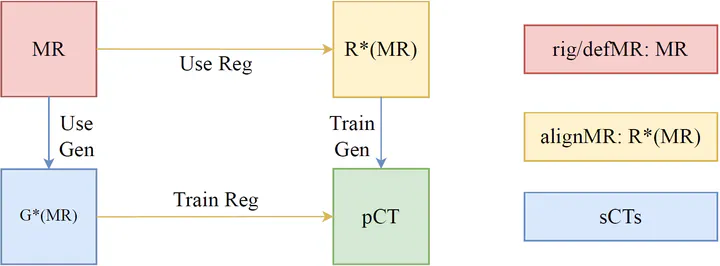A Unified Generation-Registration Framework for Improved MR-based CT Synthesis in Proton Therapy
Jan 20, 2024·
 ,
,
,
,
,
,
,
·
0 min read
,
,
,
,
,
,
,
·
0 min read
Xia Li
Renato Bellotti
Barbara Bachtiary
Jan Hrbacek
Damien Weber
Antony Lomax
Joachim Buhmann
Ye Zhang
 Image credit:
Image credit:
Abstract
The use of Magnetic Resonance (MR) imaging for proton therapy treatment planning is gaining attention as a highly effective method for guidance. At the core of this approach is the generation of Computed Tomography (CT) images from MR scans. However, the critical issue in this process is accurately aligning the MR and CT images, a task that becomes particularly challenging in frequently moving body areas, such as the head-and-neck. Misalignments in these images can result in blurred synthetic CT (sCT) images, adversely affecting the precision and effectiveness of the treatment planning.
Type
Publication
Arxiv